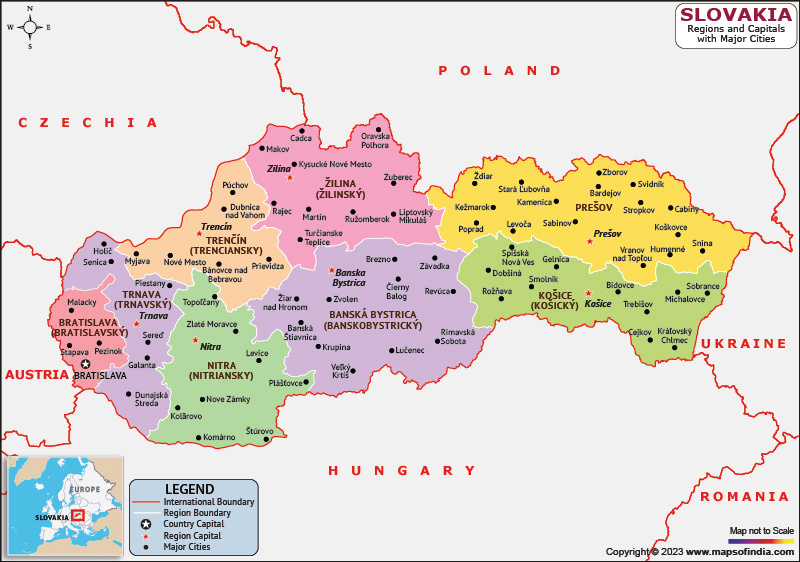Slovakia, officially known as the Slovak Republic, is a landlocked nation situated in Central Europe. It is bordered by Ukraine to the eastern front, Austria to the southwestern front, Hungary to the southern front, Poland to the northern front, and the Czech Republic to the northwestern front.
History
It was a province of the Roman Empire until the sixth century, when Slavic tribes migrated there. It became a province of the Habsburg Monarchy in the 14th century and remained so until the completion of World War I, when it merged with other Slavic areas to establish the Kingdom of Yugoslavia. Slovenia was conquered by Nazi Germany during World War II, and it was afterwards absorbed into communist Yugoslavia. Slovenia gained independence following the fall of communism in 1991.
Culture
Slovakia has a diverse and vibrant culture that reflects its history and geography. Its folk traditions include music, dance, and costumes, which are often displayed at festivals and celebrations throughout the country. Folk art, including ceramics and woodcarving, is also an important part of Slovakian culture.
Language
Slovak is the primary language of the nation, and it is spoken by approximately 5 million people worldwide. It is a Slavic language that is closely related to Czech and Polish. Slovak uses the Latin alphabet and has a relatively simple grammar system. English, German, and Russian are also commonly spoken in Slovakia, especially in urban areas.
Geography
Slovakia is a nation with a diverse landscape. The Carpathian Mountains run through the country, and there are several national parks and nature reserves, including the Tatra National Park, which is home to the highest peak in Slovakia, Gerlachovský štít. The Danube River flows through the southern part of the country, and there are several other rivers and lakes that provide opportunities for water sports and fishing.
| Official Name | Slovak Republic |
| Capital | Bratislava |
| Population | 5460185 |
| Area | 49,035 km2 |
| Currency | Euro |
| Religion | Christianity |
| Language | Slovak |
| Major Cities | Nitra, Kosice, Banska Stiavnica |
FAQs
Q1: What is the significance of the Slovakian coat of arms?
The Slovakian coat of arms features a red shield with a silver double-barred cross, which represents the early Christian missionaries, Cyril and Methodius. The blue background represents the sky and the mountains of Slovakia, and the three peaks symbolize the Tatra, Fatra, and Matra mountain ranges.
Q2: What are some popular folk traditions in Slovakia?
Slovakia has a rich and diverse folk culture, with many traditional festivals and celebrations throughout the year. Some popular folk traditions include the folk dance, known as kroje, which is often accompanied by music played on the fujara (a long wooden flute) and the cimbalom (a type of dulcimer). Another popular tradition is the making of pottery and ceramics, which are often decorated with colorful folk motifs.
Q3: What is the significance of the Slovakian national anthem?
The Slovakian national anthem is "Nad Tatrou sa blýska," which translates to "Lightning Over the Tatras." The song was originally a patriotic poem written in 1844 by Janko Matúška, and it became popular during the Slovakian national awakening in the late 19th century.
Q4: What are some notable landmarks in Slovakia?
Slovakia has many historic landmarks and attractions, including the Bratislava Castle, which dates back to the 9th century, and the Spis Castle, which is one of the largest castles in Central Europe.
Last Updated on: June 10, 2025
